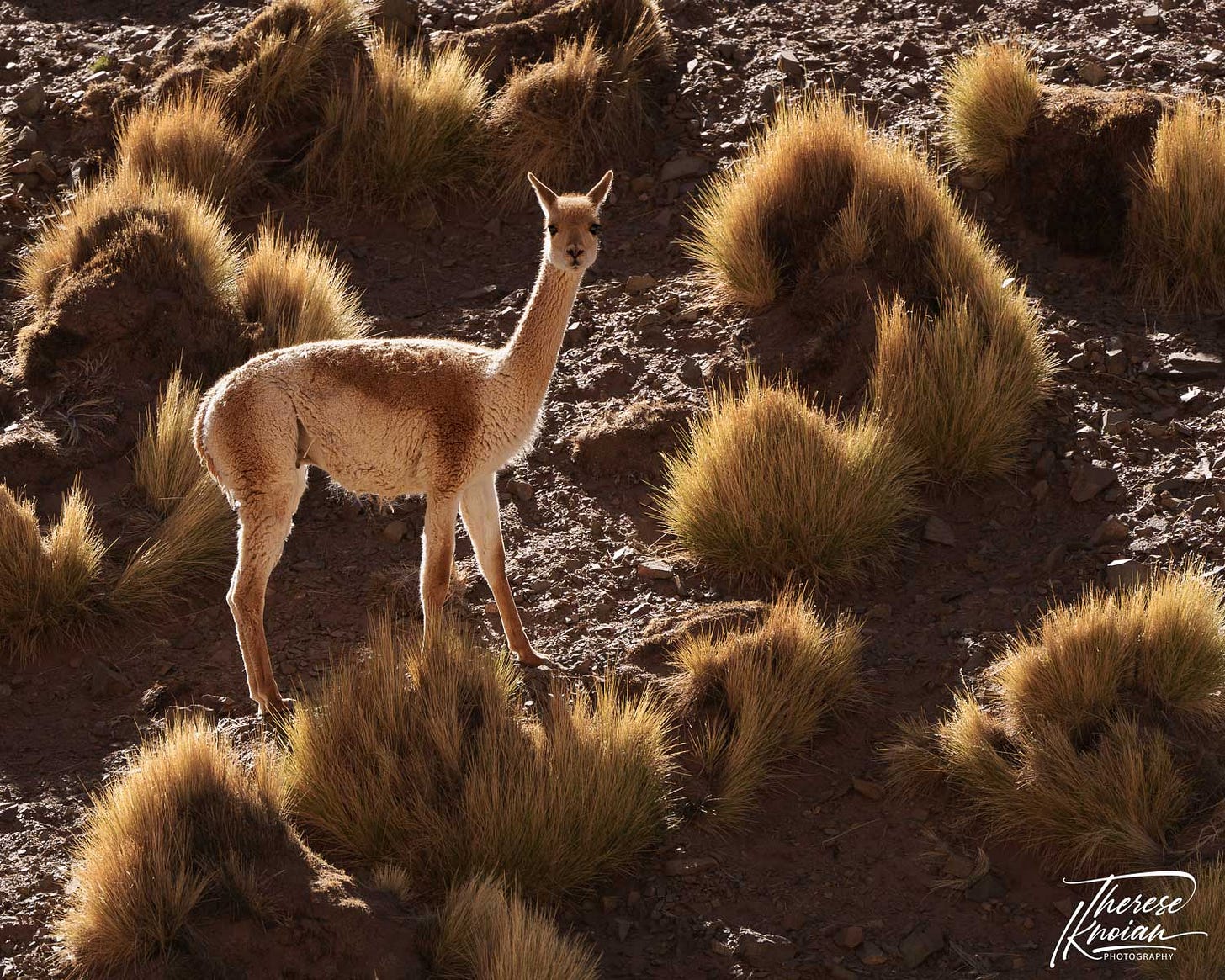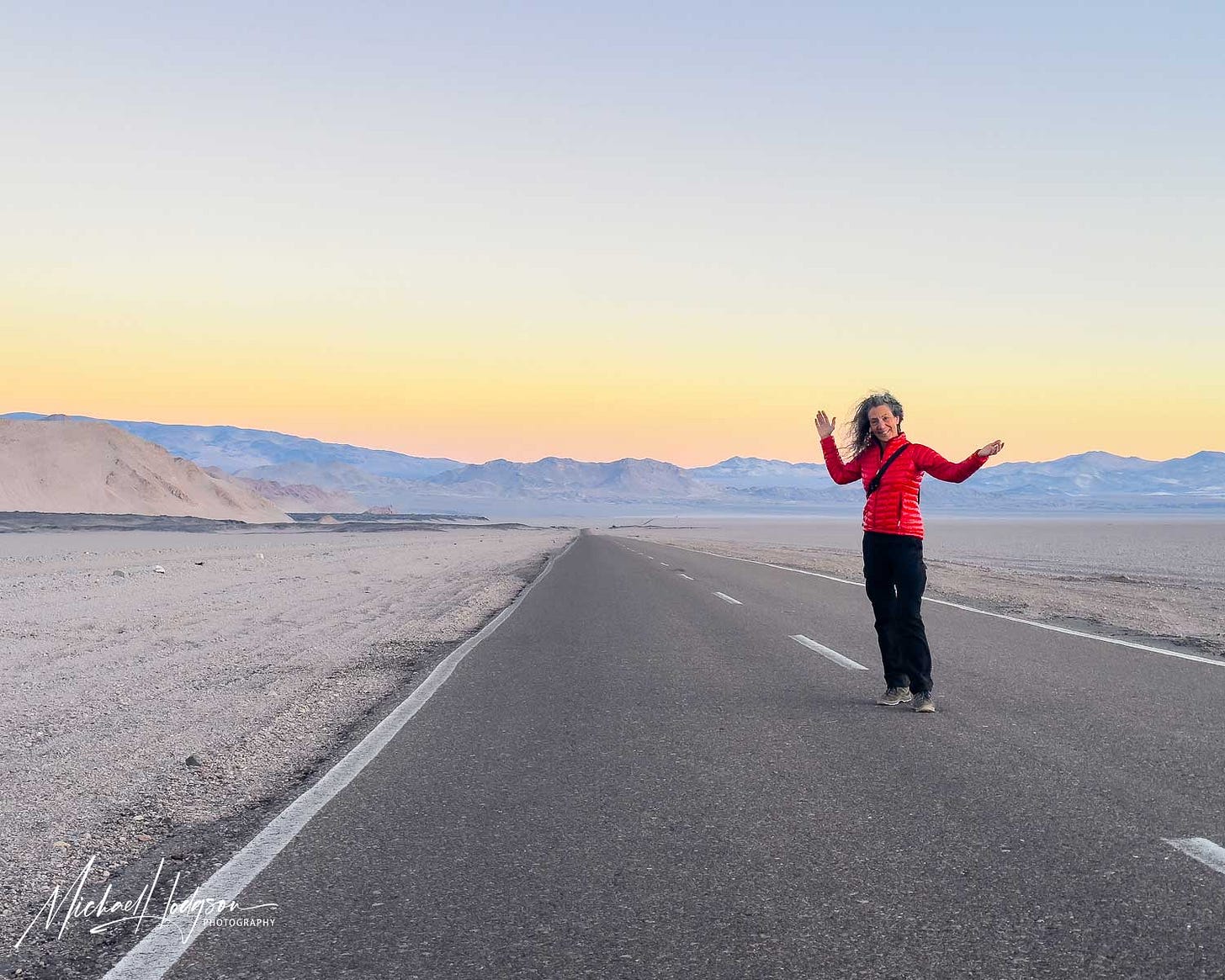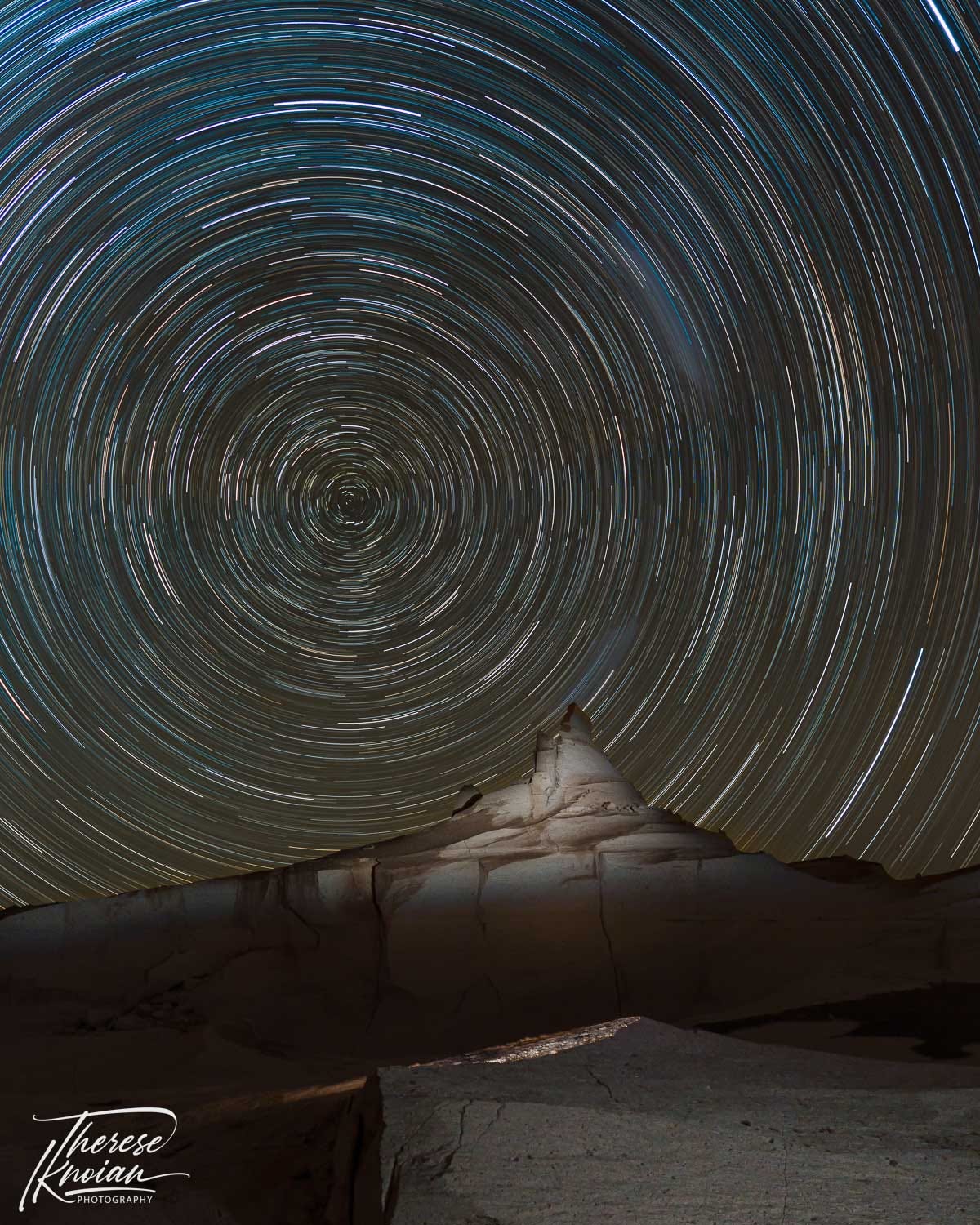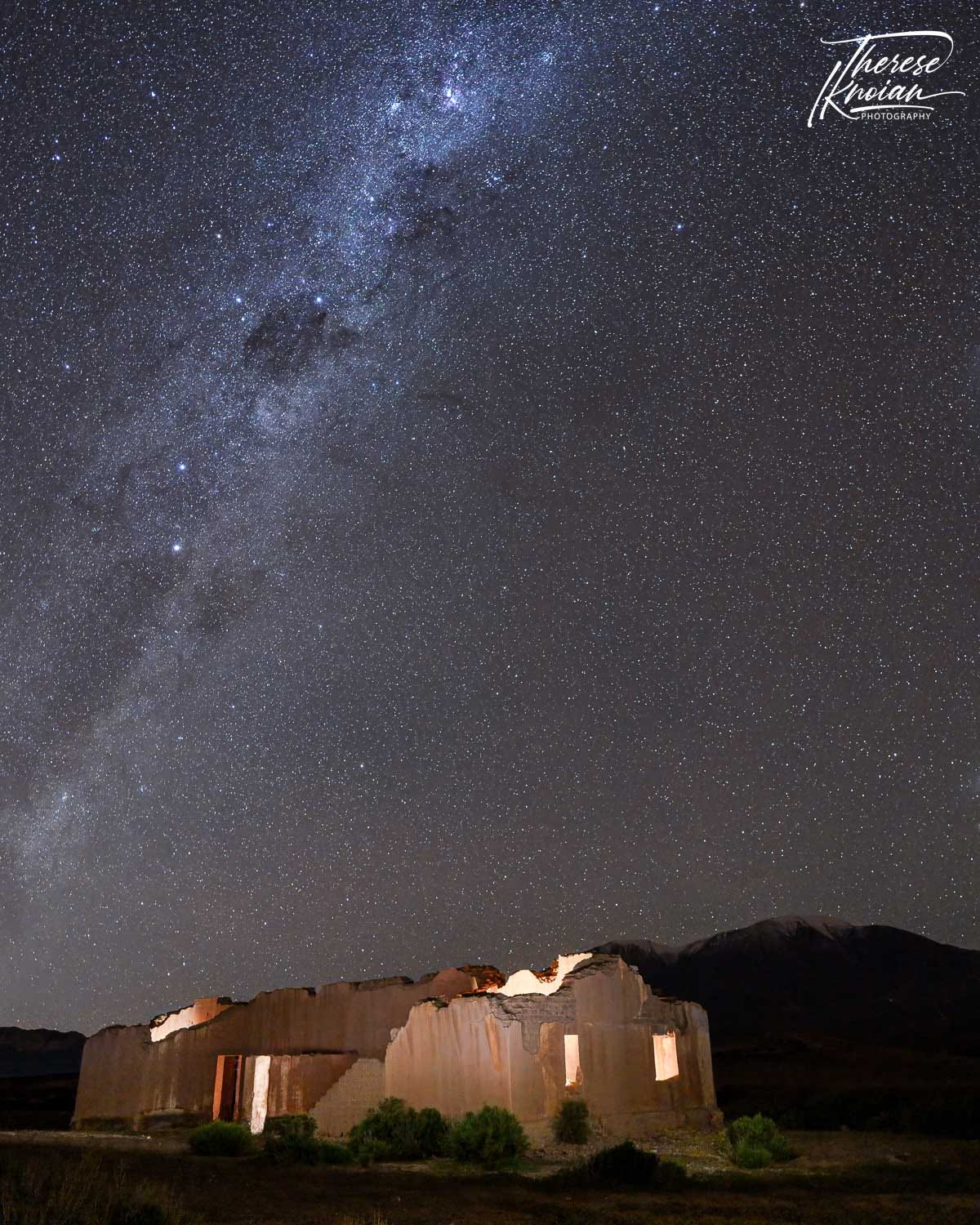Argentina’s Puna de Atacama has become one of my true loves in the world (sorry, Michael). The vast expanse of such diverse landscape, terrain and scenery, not to mention dark skies of the purest nature, is like none other in the world. The cute vicunas batting their thick eyelashes don’t hurt, either.
This was, however, not an easy love affair. I had to spend some time with the Puna before I fell so deeply in love. That happened in 2017 when the opportunity came up to go to the high plateau of Argentina called the Puna. Michael was beside himself with excitement, so I looked at maps and photos, scratched my head a bit, and said, “But there’s nothing there!” Trip details included many hours each day of driving and sitting – and those who know me realize I don’t sit still well at all. Michael often pokes fun at how much I fidget.
But I went because I’m also not one to turn down what seems to be a great adventure, and I do love to see any place new and different. The fact that the trip was just four days left me thinking, I can do this ... what's the worst that can happen? And, as we both like to say, I won’t know unless I go.
Ever since that 2017 trip – the one I call the “Puna Express” because it was so short and kind of zipped past so many things so fast – I have dreamed of going back and indulging in more together time. And that finally became a reality this spring. Forget a quickie. I was in love. Nothing less than a couple of weeks in the Puna would do! I wanted to immerse myself in the arid high plateau, soaring peaks, salt flats at sunrise, abandoned train stations under dark skies, spectacularly orange sunsets, lakes with flamingos, colorful red rock formations and canyons, and enjoy all the wildlife, flora and fauna. Yup, you get all that in the Puna de Atacama and so much more.
What is the Puna de Atacama?
For perspective, Argentina’s Puna is an extension of the Atacama Desert in Chile that you always hear so much about. But the Puna is a smaller and much less traveled part of the Atacama. It snuggles into the northwest corner of Argentina, bordered by Chile on the west and Bolivia to the north.
Two things I always found puzzling: When we say we are going to the Puna de Atacama, everybody says, “Oh, Chile?” And when you say you are going to Argentina, everybody says, “Oh, Buenos Aires?” No and no. This is the Argentinian Puna, still part of the Andes Mountains high plateau, still high altitude, still arid, and with a lot of the same kind of scenery as Chile. But did I mention fewer people? Yes. A lot less, which makes it so intriguing.
Our first trip was so superbly organized, we returned to the experts at Socompa Adventure Travel for this one, too. These days, we were both much more deeply passionate about photography so catching the right light in the right places and the stars overhead when possible was a must. That meant spending two or three nights in a place that some people might just zip past or jump out for a quick selfie. I wanted to feel this place.
A lot of nothingness – beautiful jaw-dropping nothingness
My assessment of the region in 2017 was not incorrect: If you take a sweeping, skimming look, there is a lot of nothingness. But then you look deeper. Suddenly, you see details in the high-elevation landscape, like tall, snow-capped volcanoes, never-ending salt flats, and deep blue lagoons with splashes of pink from thousands of flamingos.
Researchers, historians and geologists from all over the world travel to the Puna to explore the nearly alien environment with an average elevation of about 12,000 feet. It is also one of the driest and highest places in the world, where you find the second-largest salt flat in the world.
We did a circular route with our wonderful guide, Lautaro, starting and ending in Salta, covering nearly 1,700 miles. And I could have just kept going. We stayed in homes, pensions, small hotels, and even one super fancy wine resort. Which was delightful, but when we walked in looking like dirty backpackers and took a little look around the lobby, we were politely asked if we needed something. Yeah, how about our room and a shower and a glass of wine? We did feel a bit out of place, surrounded by beautiful people in flowing white linen. Although it was a great break with its comfy bed and gourmet meals, we were actually eager to get back on the dirt roads to a small hotel with home-cooked food and fewer people where we wouldn’t get stared at for our dirty boots and smudgy faces.
The Puna de Atacama is not a place for those needing fancy rooms, a concierge, and air conditioning. But there are sights you won’t find elsewhere, even aside from jaw-dropping landscapes: In El Penon, at the quaint Hosteria El Penon (we love this place), our room door was open when suddenly I saw a black sheep nonchalantly wander past. Wait, what? I scampered to the door and peered down the hall, watching it saunter along, hang a left turn, and go out the front door. Now, how often do you see a sheep take a casual tour of your hotel?
Next time…
We weren’t a couple of days into our trip when I started taking notes about things we wanted to see and do “next time:” More time in Tolar Grande, longer hikes in the Campo de Piedra Pomez volcanic fields, flamingos at sunrise at the Laguna Grande, camping at the Mina La Casualidad for night photography, more, more, more, farther, even slower and longer than this trip, more adventure….
Argentina’s Puna de Atacama is like that. It grows on you slowly until you realize you are head over heels in love with all it has to offer.
— Story by Therese Iknoian











Gorgeous photos. That sky!
Absolutely adding it to our list. I can't wait to be able to wander at will and enjoy beautiful and wild places at our own pace. Thanks for the inspiration!